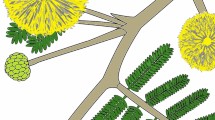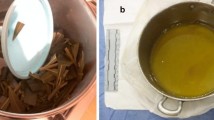Abstract
The effects of emestrin (EMS), a secondary metabolite of the Emericella species, on male ICR mice were examined. The intraperitoneal LD50 values of EMS were 17.7 and 13.0 mg/kg at 24 and 48 hr, respectively. The target organs of EMS were the heart, liver and thymus. In doses over 30 mg/kg the experimental animals died from cardiac failure shortly after the injections. Several survivors that were given EMS in doses under 20 mg/kg showed severe centrilobular necrosis in the liver at 24 hr. Marked degeneration of mitochondria was seen in electron micrographs of both cardiac muscle cells and hepatocytes. In the degenerated hepatocytes, prominent proliferation of RER, membrane-limited inclusions containing both ribosome-like granules and RER, and fenestrated lamella-like structures were observed. Massive necrosis of lymphocytes was always observed in the cortical layer of the thymus of the survivors within 24 hr, while bilateral adrenalectomized mice showed no discernible pathomorphological changes in the lymphoid tissues. Pretreatment of mice with diethyl maleate increased the incidence and severity of hepatic necrosis, whereas that with either cysteine or CoCl2 reduced the severity of centrilobular necrosis of the liver. Pretreatment with phenobarbital had no significant effect on EMS-induced hepatic lesions.
Similar content being viewed by others
References
Carlton WW, Szcech GM. Mycotoxicosis in laboratory animals. In: TD Wyllie and LG Morehouse (eds) Mycotoxic Fungi, Mycotoxins, Mycotoxicosis. Vol 3 Marcel Dekker, New York, 1977: 33–462.
Frame R & Carlton WW. Acute toxicity of gliotoxin in hamsters. Toxicol Letters 1988; 40: 269–73.
Ishizaki K, Kawai K, Kawai Ken-ichi. The effect of emestrin from Emericella striata on mitochondrial reaction. In Symposium: ‘7th international symposium on mycotoxins and phycotoxins’. Aug 16–19, 1988 Tokyo (abstract).
Kornburst DJ, Bus JS. The role of glutathione and cytochrome p-450 in the metabolism of methylchloride. Toxicol Appl Pharmacol 1983; 67: 246–56.
Maebayashi Y, Horie Y, Yamazaki M. Productivity of some mycotoxins in fungi isolated from Iraqi soil. Proc Jpn Soc Mycotoxicol 1984; 20: 28–30.
Mitchell JR, Jollow DJ, Potter EZ, Gilete JR, Brodie BB. Acetaminophen-induced hepatic necrosis. IV Protective role of glutathione. J Pharmacol Exp Ther 1973; 187: 211–7.
Mullbacher A, Waring P, Twari-Palni V, Eichner RD. Structural relationship of epipolythiodioxopiperazine and their immuno-modulating activity. Mol Immunol 1986; 23: 231–55.
Nagarajan P. Gliotoxin and epipolythiodioxopiperazines. In: V Betina (ed.) Mycotoxins, Production Isolation, Separation and Purification. Elsevier, Amsterdam, 1984: 351–85.
Saito T, Suzuki Y, Koyama K, Natori S, Iitaka Y, Kinoshita K. Chetracin A and chaetocins B and C, three new epipolythiodioxopiperazines from Chaetomium spp. Chem Pharm Bull 1988; 36: 1942–56.
Seya H, Nakajima S, Kawai K, Udagawa S. Structure and absolute configuration of emestrin, a new macrocyclic epidithiodioxopiperazine from Emericella striata. J Chem Soc Chem Commun 1985: 657–8.
Seya H, Nozawa K, Nakajima S, Kawai K, Udagawa S. Studies on fungal products. Part 8. Isolation and structure of emestrin, a novel antifungal macrocyclic epidithiodioxopiperizine from Emericella striata. X-ray molecular structure of emestrin. J Chem Soc Perkin Trans I 1986: 109–16.
Udagawa S. Fungal contamination of imported spices, with special reference to ascomycetous fungi. Jpn J Food Microbiol 1986; 3: 46–52. (in Japanese)
Waring P, Mullbacher A, Eichner RD. The mechanism of toxicity at the molecular level of gliotoxin and some analogues. In Symposium: ‘Cellular and molecular mode of action of selected microbial toxins in food and feeds’ Oct 31–Nov 2, 1988 in The National 4-H Center, Chevy Chase, USA (abstract)
Author information
Authors and Affiliations
Rights and permissions
About this article
Cite this article
Terao, K., Ito, E., Kawai, Ki. et al. Experimental acute poisoning in mice induced by emestrin, a new mycotoxin isolated from Emericella species. Mycopathologia 112, 71–79 (1990). https://doi.org/10.1007/BF00436501
Received:
Accepted:
Issue Date:
DOI: https://doi.org/10.1007/BF00436501




